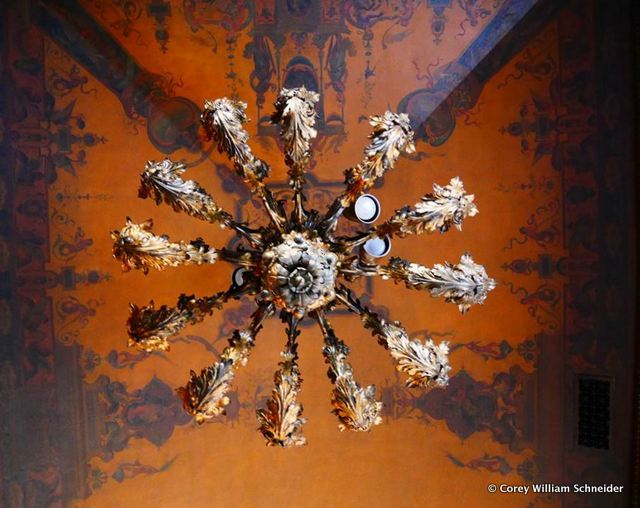Recently, the New York Adventure Club visited the Gilded Age Harkness House on 75th Street and Fifth Avenue. The Italian Renaissance-style mansion was completed in 1908 as a wedding gift for the son of Stephen V. Harkness, a businessman in Ohio who had invested in Rockefeller’s oil business. Though the building is considered understated in its core design, the detailed ornamentation at the top of the building and the layout of the interior give hint to the nature of the family, who more reserved than their peers like the Vanderbilts.

Unlike other Gilded Age mansions, the Harkness House was notably absent an ostentatious ballroom and the rooms were deliberately designed to be smaller and more intimate. In fact, even the name as Harkness House instead of mansion was a conscious decision. The Harknesses’ modesty is further reflected in the anonymity of their donations and benefactions, including dozens of hospital and university buildings they donated that don’t bear their name.”

Because of the narrow lot, architects Hale & Rogers designed the main entrance to be on 75th Street and had to ask the neighbors to change their address to 3 East 75th Street. The lot for the house was purchased in 1906 for $450,000 and the house built at a tune of $550,000 in over the course of 68 weeks. According to an extensive brochure on the historic home by Paul Goldberger, the Harkness House is unique because “Although the house has not functioned as a private residence for more than three decades, inside it retains even more of the ambiance of Fifth Avenue’s great houses than do mansions better known to the public, such as the Frick Collection and the Cooper-Hewitt Museum.”

An extensive art collection of work by the European masters was in the house until it was bequeathed to the Metropolitan Museum of Art when Mary Harkness died in 1950, augmenting scores of gifts Edward and Mary made to the museum during their lifetimes. Major gifts included the Tomb of Perneb and Lord Carnarvan’s collection of Egyptian antiquities.

In a sense, the house remains in the family. Having no children, the Harknesses bequeathed the house to their family foundation, The Commonwealth Fund. The Fund was established in 1918 by Edward’s mother, Anna, the centennial year of her husband Stephen’s birth. While occupying the house since 1952 as its headquarters, the Fund has respected the integrity of James Gamble Rogers’ design, a model of adaptive re-use and historic preservation.







Next, check out 6 lost Gilded Age Mansions of the Upper West Side and the Remnants of the Vanderbilt Mansion in NYC. This article collectively written by Michelle Young and Corey William Schneider.





